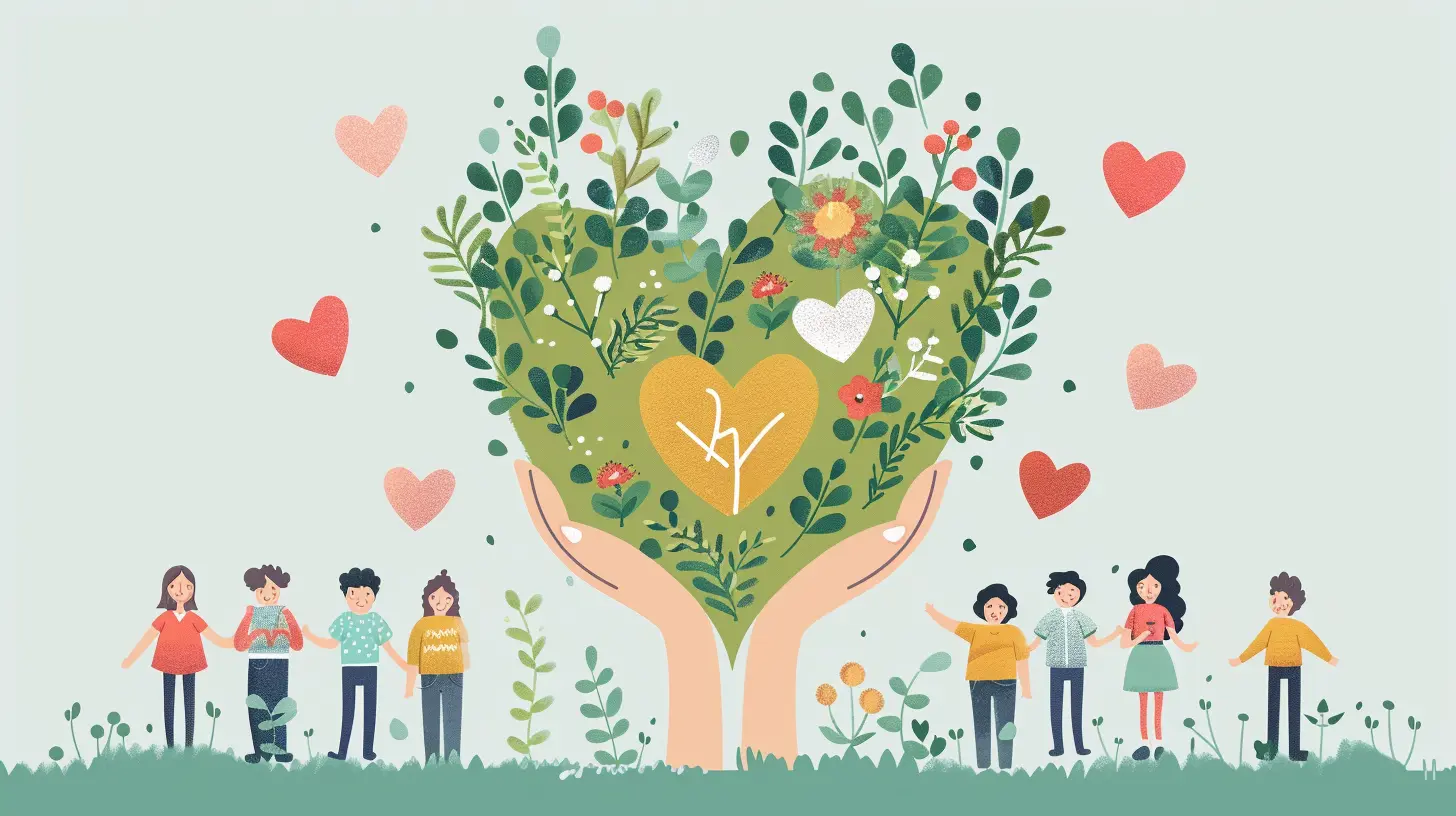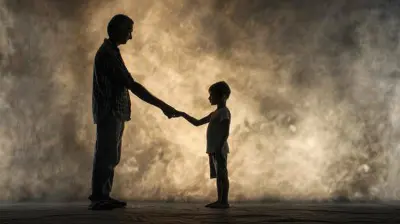Cultivating Gratitude as a Family for Better Well-being
4 August 2025
Let’s be real: life moves fast. Between work deadlines, school drop-offs, grocery runs, and bedtime chaos, it’s easy to lose sight of what really matters. As parents, we all want our children to grow up happy, kind, and emotionally strong. But how do we teach that in a world full of distractions?
Here’s a little secret—gratitude. Yep, that simple act of noticing and appreciating the good stuff—it’s a game-changer. And when practiced as a family, gratitude does more than just make us feel warm and fuzzy inside. It shapes a more connected, resilient, and joyful household.
So, let’s talk about cultivating gratitude as a family—not just once a year around the dinner table at Thanksgiving, but as a daily practice that nourishes well-being for you and your kids.
Why Gratitude Matters (Especially for Families)
You know how a small spark can light up a huge dark room? Gratitude works the same way for our hearts. It shifts our focus from what’s missing to what’s already beautiful in our lives.It Boosts Mental Health
Want happier kids? Want to feel more fulfilled as a parent? Gratitude can actually rewire the brain. Studies have shown that people who regularly practice gratitude have lower levels of anxiety, depression, and stress. It’s like giving your mental health a daily multivitamin.For kids, learning to focus on the good stuff—even on tough days—can build emotional resilience. Instead of spiraling over a failed math test, they might say, “Well, I did my best, and I have another chance tomorrow.” That subtle shift changes everything.
It Strengthens Relationships
Saying “thank you” is more than good manners. It’s a powerful bonding tool. When family members feel acknowledged and appreciated, it creates warmth and trust. Plus, gratitude encourages empathy—when kids recognize the efforts others make, they begin to mirror those behaviors themselves.It Builds a Positive Family Culture
Ever walked into a home and just felt the vibe was peaceful and connected? That’s not luck—it’s intention. Families who make gratitude part of everyday life often cultivate a stronger sense of belonging and purpose. It becomes part of your family’s “emotional DNA.”
How to Start a Family Gratitude Practice
Okay, so now we know why gratitude is important. But how do we actually make it stick in real life without it feeling forced or cheesy?1. Lead by Example
Let’s face it—kids are like sponges. They learn more from what they see than what we say. So, start by modeling gratitude in your own life.Instead of complaining about traffic, maybe say, “I’m glad we have this little extra time in the car together.” Or say thanks to your partner in front of the kids for making coffee or handling bedtime. These small moments show your kids that gratitude isn’t about big speeches—it’s about noticing the little things.
2. Create a Daily Gratitude Ritual
Rituals have power, especially when they’re consistent and meaningful. Try adding gratitude to everyday moments. Here are a few ideas:- Gratitude Jar: Keep a jar in the kitchen. Each day, everyone writes one thing they’re grateful for and drops it in. Read them together at the end of the week.
- Dinner Table Thanks: Go around the table before or after dinner and have everyone share one good thing from their day.
- Bedtime Gratitude: During nighttime routines, ask your child, “What made you smile today?” or “What was the best part of your day?”
Simple? Yes. Powerful? Absolutely.
3. Make It Creative and Fun
Kids love anything playful. Mix gratitude with creativity to keep things exciting:- Gratitude Art: Have your kids draw a picture of something they’re thankful for. Put it on the fridge—it’ll be the happiest gallery wall ever.
- Thank You Notes: Encourage your kids to write or draw notes to people they appreciate—teachers, friends, even siblings. It teaches both expression and connection.
- Gratitude Walks: Take a walk together and see who can point out the most things they're grateful for, like sunshine, birds singing, or funny-shaped clouds.
4. Use Technology (Yes, Really)
Not everything on screens is doom and gloom. You can use tech to your advantage here. There are gratitude apps made just for kids, or you can create digital photo albums full of happy memories to look back on together.Even a simple group family chat where everyone drops in a “win of the day” can spark gratitude and connection.
Overcoming the "Gratitude Block"
Let’s be honest—some days feel like a gratitude desert. You spill coffee, the toddler throws oatmeal across the room, and someone’s running a fever. Who's got time to feel thankful?And that’s okay. Practicing gratitude doesn’t mean ignoring hard stuff or pretending everything’s perfect. It means making space for the good even when things are hard.
Here are some ways to keep gratitude alive during the rough patches:
Acknowledge the Hard Stuff
Start with empathy. If your child is upset, say, “I understand that you're feeling frustrated.” Then gently help them shift focus: “Even though today was tough, can you think of one thing that went okay?”Teaching kids that both things can be true—that life can be hard and beautiful at the same time—is a gift that will serve them forever.
Keep It Low-Pressure
Gratitude should feel like a safe space, not another thing on the chore list. If your child doesn’t want to share one day, let it be. Just model it yourself and keep the atmosphere positive.
Growing Gratitude Through Giving
One of the best ways to feel grateful is to give. When we help others, we often realize how much we already have. Plus, it teaches kids compassion, generosity, and social responsibility.Try these family-friendly giving practices:
- Volunteer Together: Whether it’s at a local food bank, animal shelter, or neighborhood clean-up, volunteering gives kids a tangible way to make a difference.
- Donate Toys and Clothes: Clean out closets as a family and talk about where the donations will go and who they might help.
- Random Acts of Kindness: Leave a kind note for a neighbor, bake cookies for a teacher, or pay for the car behind you in the drive-thru. Let your kids come up with ideas too!
Gratitude for Parents: Not Just for the Kids
Parenting is hard. And messy. And sometimes thankless. But practicing gratitude as a parent can shift your entire parenting experience from overwhelm to presence.Notice the Small Wins
Did your toddler finally pee near the potty? Did you manage to drink your coffee while it was still warm? Celebrate it! These little moments matter more than we realize.Reflect on the Journey
Take a moment now and then to look back. Remember how far your kids—and you—have come. Write it down. Maybe even start your own gratitude journal. It'll be your anchor on those chaotic days.Connect with Other Parents
Sometimes, just texting a fellow parent and saying, “I’m grateful for your support” can lift both your spirits. Community builds gratitude too.Long-Term Benefits of Raising Grateful Kids
When we encourage gratitude at home, we’re not just creating a nice atmosphere—we’re raising emotionally intelligent, compassionate, and grounded humans. And honestly, the world needs more of that, doesn’t it?Kids who grow up with gratitude tend to:
- Have stronger emotional regulation
- Build healthier relationships
- Be more optimistic and resilient
- Focus on contribution rather than consumption
Essentially, you’re giving them a lifelong tool for happiness, connection, and success.
Final Thoughts: Start Small, Stay Consistent
You don’t need a gratitude manual or Pinterest-worthy jars to get started. Just start—wherever you are, however messy life feels right now.The key is consistency, not perfection. A few minutes a day. A heartfelt “thank you.” A shared smile over dinner. That’s what builds the foundation for a grateful family and a healthier outlook on life.
Remember, you're planting seeds of gratitude today that your children will carry into tomorrow—and that’s a legacy worth cultivating.
all images in this post were generated using AI tools
Category:
Mental HealthAuthor:

Kelly Snow
Discussion
rate this article
1 comments
Nellie Clarke
In the quiet moments of gratitude, secrets of connection unfold—what hidden treasures lie within your family’s unspoken thanks?
August 16, 2025 at 2:51 AM

Kelly Snow
Thank you for your insightful comment! Unspoken gratitude often reveals the depth of our bonds and the love that binds us together, enhancing our family's well-being.


